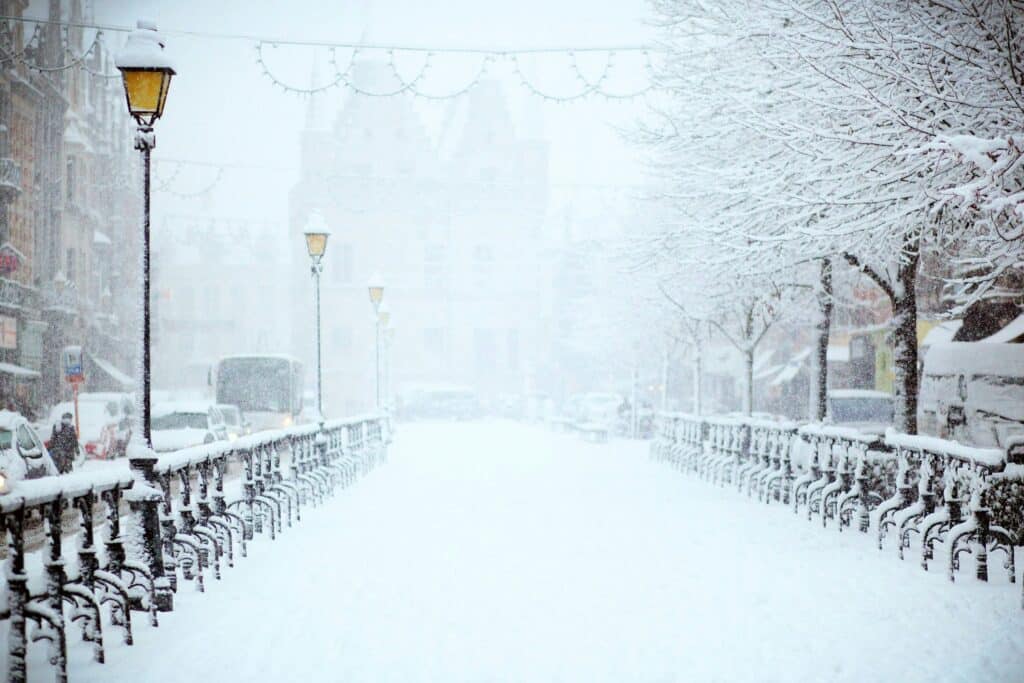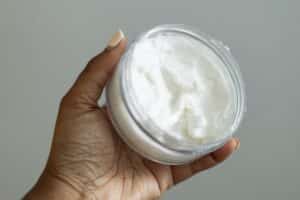Winter Skin Care: Why Your Routine Needs to Change in the Cold
and How to Keep Your Skin Calm, Hydrated & Happy
When the temperature drops, your skin changes too. Many people ask: why does winter dry out skin so badly? The short answer: a combination of cold air outside, dry heat indoors, and habits like long hot showers all conspire to ruin your skin’s barrier. That barrier — the lipid layer on your skin — is what keeps water in and irritation out. Ignoring it means itching, flares of conditions like eczema or psoriasis, and skin that looks dull and cracked.
Below we’ll walk you through why winter is tough on the skin, what happens when your skin barrier is compromised, and how to build a dermatologist-recommended routine for winter skin care (yes, that includes your body, not just your face). Let’s get specific.

Why Does Winter Dry Out Skin?
1. Cold, dry air outside
In winter, the outdoor air holds far less moisture. Cold air is inherently dry, which means as you walk outside and breathe that air in, your skin is losing moisture into the environment. Your body’s natural oils—what we call the lipid layer—are trying to fight that off, but when the assault is constant, they lose.
2. Dry heat indoors
Once you retreat into your warm home, the furnace or heaters keep the air comfortable for humans—but not so great for skin. Dry heat pulls moisture out of your skin the same way a desert would.
3. Longer, hotter baths or showers
It feels great, but long hot showers strip your skin’s natural oils. These oils (lipids) form the barrier that locks water in. Without them, the water in your skin evaporates faster, and you’re left with dryness, tightness, and often reactive flares of eczema or even psoriasis.
What’s the Skin Barrier (Lipid Layer) & Why It Matters
Your skin isn’t just a passive cover—it has an active job. The outermost layer of your skin (the stratum corneum) has lipids (oils + fats) that form a barrier. This barrier:
- Keeps water inside your skin so it doesn’t evaporate away.
- Keeps irritants (cold/dry air, harsh soaps, allergens) outside or less damaging.
- Helps your skin function normally — repair itself, resist flares, etc.
When that barrier is compromised (by cold air, heater heat, harsh soaps, super‐hot water), water leaves the skin faster and irritants get in easier. This leads to dryness, flaking, itching, and can trigger conditions like Eczema (atopic dermatitis) or Psoriasis.
For example:
“Some skin care products… work better when applied to damp skin as part of their function is to seal moisture in.” – Dina Strachan, MD (Ohmymag UK)
In short: you need to protect that lipid layer and work to repair it during winter.
Why Your Winter Skin Care Routine Needs to Change
Because your skin is facing a tougher environment, a routine that works in summer may not cut it in winter. This is especially true if you already have sensitive skin, eczema/psoriasis, or are over age 50 (more on that below). So we talk about “skin care routine in winter”, “winter skincare tips”, “gentle skin care tips”, etc.
Here’s how to adjust your routine for the colder months:
a) Limit hot water & length of bath/shower
- Turn the water temperature down: warm is fine, hot is harsh.
- Limit time spent in the shower or bath (e.g., 10 minutes vs 20+).
- Focus on the body areas that matter most: face, neck, armpits, groin and buttocks—these are zones where the skin barrier is thinner or more vulnerable. Using strong soap all over your body strips oil everywhere.
- Use a gentle, moisturizing cleanser instead of a soap bar or a strong surfactant. This helps preserve the lipid layer rather than stripping it.
b) Moisturize immediately after washing
Because your skin is damp, that’s your chance to seal in water. The moisturizer acts to lock that moisture in before it evaporates. This principle is supported by multiple sources.
c) Use a humidifier
Since dry indoor air is sucking moisture out of your skin, use a humidifier in bedrooms or main living spaces. It doesn’t take fancy — even one in a bedroom while you sleep helps. This helps keep the ambient moisture up so your skin doesn’t lose as much.
d) Choose the right moisturizer for winter dry skin
This is key. Your product selection matters more in winter.
Here’s a breakdown:
- Humectants: ingredients that draw water into your skin (e.g., glycerin, hyaluronic acid).
- Emollients: ingredients that fill in gaps between skin cells and smooth the surface (e.g., fatty acids, ceramides).
- Occlusives: ingredients that form a barrier on the skin so water doesn’t leave (e.g., petroleum jelly, heavy oils).
In winter you’ll want a moisturizer that combines all three or at least two of them, because you’re dealing with increased water loss and barrier breakdown.
e) Over 50? You may need a heavier routine
As we age, our skin naturally becomes drier.This means if you’re over 50, adding a richer cream, layering an occlusive at night, or applying moisturizer more frequently may make the difference between flaky skin and comfort.

Winter Dry Skin: Putting It All Together
Here’s a sample winter skin care routine (body + face) to deal with winter dry skin, winter dry skin best moisturizer choices, and dermatologist recommended skin care routine approach:
- Cleanse: Use a gentle, moisturizing cleanser (face + neck, armpits, groin, buttocks, arms, legs). Avoid harsh soap bars all over.
- Shower habit: Keep showers warm (not hot), limit to ~10 minutes, pat dry (don’t rub).
- Moisturize quickly: Within 3 minutes of shower, while skin is slightly damp. Use a moisturizer with humectants + emollients, and at least one occlusive if needed.
- Humidify: Run a humidifier especially at night; aim for indoor humidity of ~30-50%.
- Body coverage: Don’t neglect body skin—areas like arms, legs, torso, and vulnerable zones (armpits, groin, buttocks) need care too.
- Special care if over 50: Choose richer creams, use occlusive barrier products at night, apply moisturizer more frequently (morning + night + after washing).
- Flare-condition awareness: If you have eczema or psoriasis, the winter stress on your skin barrier can trigger flares. Be extra consistent with barrier-repair skincare and talk to your dermatologist if you see redness, cracking, or flare-ups.
Why This Matters for Eczema, Psoriasis & Itchy Skin
Dry skin isn’t just uncomfortable—it’s a trigger. When the barrier is compromised:
- Irritants (cold air, indoor heat, allergens) can get in more easily.
- Water leaves the skin more quickly (evaporation) → skin becomes dry, tight, rough.
- That dryness can lead to itching → scratching → damage to the barrier → cycle of inflammation.
- For eczema (atopic dermatitis) and psoriasis, the underlying inflammatory condition can be exacerbated when the barrier is weak.
In short: Your winter skin care routine isn’t optional if you want to avoid flare-ups. It’s foundational.
Final Thoughts & Call to Action
Winter doesn’t have to mean flaky, itchy, painful skin — if you build a smart routine that adapts to the season. Remember: there is no bad weather, only bad clothing — and when it comes to your skin: there is no bad weather, only bad skin care. You can have great, hydrated skin year-round if you commit to a good winter skin care routine.
Need help with dry skin or another skin, hair or nail problem? Schedule an appointment with our board-certified dermatologist here!
👉 Ready to shop for the right products? Check out the Aglow Dermatology Amazon store and the ShopMyShelf Store for curated picks built for winter skin care.
Stay warm, stay hydrated — your skin will thank you.
DISCLOSURE: This blog contains affiliate links.


